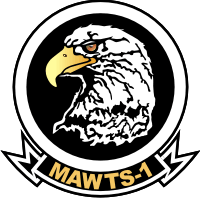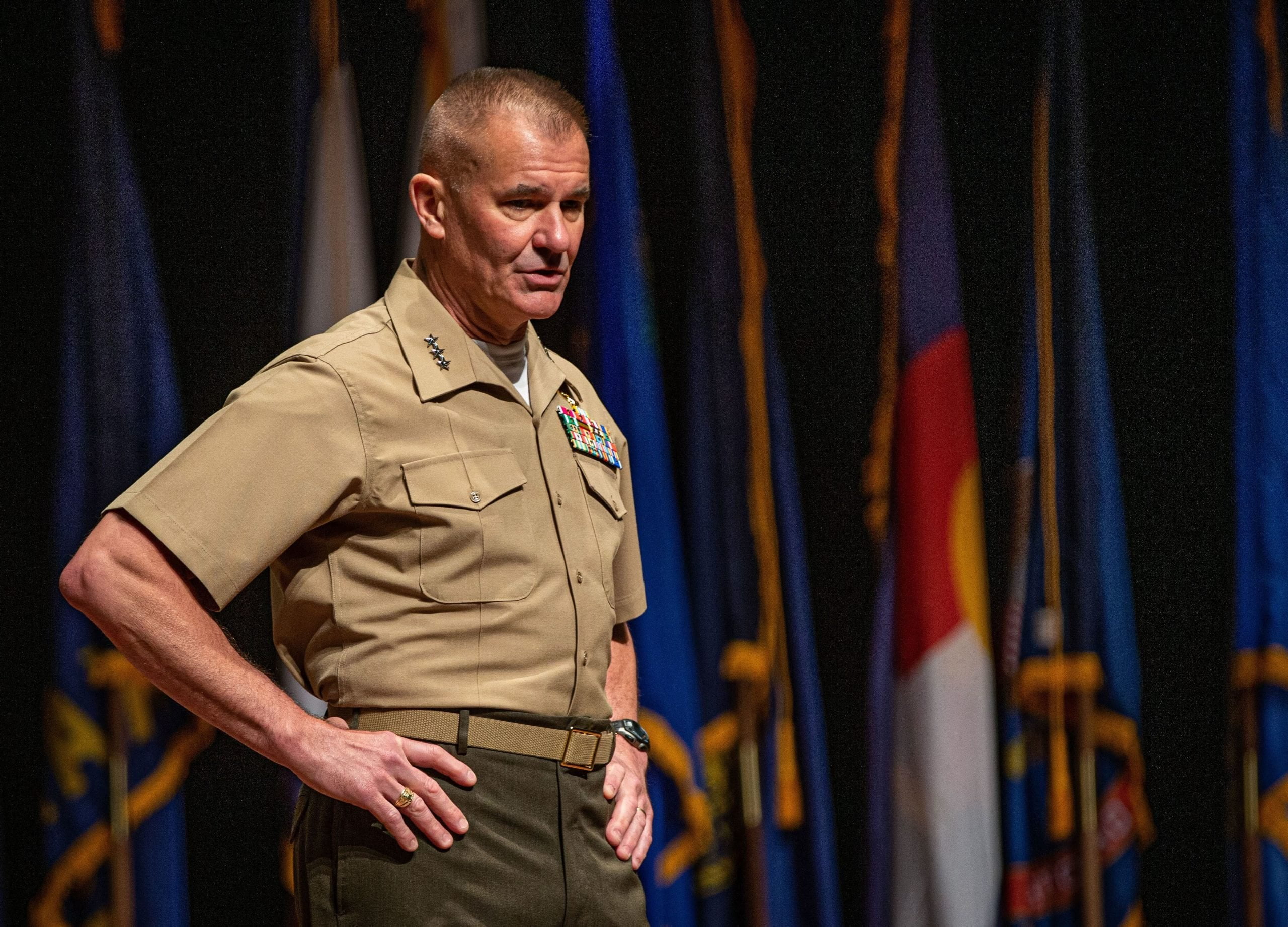By Robbin Laird
In a visit to Quantico, I had a chance to talk with LtGen Karsten Heckl, who serves as the Commanding General, Marine Corps Combat Development Command, and the Deputy Commandant for Combat Development and Integration.
I first met him when he was Assistant Deputy Commandant for Aviation, HQMC Aviation Department. I visited him when he was Commander of 2d Marine Aircraft Wing, and I interviewed him when he commanded the First Marine Expeditionary Force.
In this visit, we had a chance to focus on the evolution of the USMC within the broader context of the joint force, and discussed in particular the coming of new generation of autonomous systems and how they fitted in or enabled the kind of force transition which the USMC is engaged in.
We started with force transition and then discussed autonomous systems and their contribution to that transition. In other words, what kind of con-ops do you want to pursue and how do the new autonomous systems support those con-ops?
It was particularly interesting to have this conversation with Heckl at this time for I had just returned from my most recent visit to MAWTS-1 where the focus is upon “the physics of combat” in force transition, to use the words of LtGen (Retired) Steve Rudder.
We started by the focus which I found at MAWTS-1 upon how to enhance the survivability and lethality of the force through signature management. This is what I wrote after my meeting in early November 2023 with Major John Edwards, the Spectrum Warfare Department Head at MAWTS-1.
“In my meetings with PACFLEET this past April, a key aspect of the challenge facing the force is clearly spectrum warfare or signature management and deception.
“My takeaway from discussions at PACFLEET was very clear. Success for distributed maritime operations requires not only assured command and control but the tissue of ISR systems enabling distributed fleet operations and adding the key element of deception through various counter-ISR systems as well.
“In effect, fleet distribution built on a kill web effects infrastructure is being combined with what me be called a wake-a-mole operational capability. You can’t target me, if you can’t find me.
“As one key Navy leader put it to me: ‘Counter-ISR is the number one priority for me, to deny the adversary with to high confidence in his targeting capabilities. I need to deceive them and to make a needle look like a needle in a haystack of needles. It is important to have the capability to look like a black hole in the middle of nothing.’
“MAWTS-1 with its work on FARPs, force distribution, new ways to do C2 such as from systems operating out of the back of Ospreys, signature management and deception is clearly working along the same lines as PACFLEET.
“I had a chance to discuss this approach with Major John Edwards, the Spectrum Warfare Department Head, when visiting MAWTS-1 in November 2023. Edwards highlighted their work in preparing the force for the spectrum management challenges they experience and will experience within a contested electronic warfare environment.
“Their focus is upon ramping up the “red” threat against blue to prepare the force for the experience they have when operating in a contested environment.
“They focus on showing the operational elements of the force the kind of spectrum signature they are creating when they operate to better understand the nature of spectrum warfare and how that affects their lethality and survivability in operations. And by knowing that one can create ways to think about signature deception as well as pointed out by PACFLEET.”
It is not surprising then that LtGen Heckl emphasized the same points as the PACFLEET commander or the Spectrum Warfare Head at MAWTS-1.
LtGen Heckl argued: “It is about survivability and a key to being able to do that is signature management. We are keenly focused on reduced electronic magnetic signature management in how we think about deployment of the force and doing so with an eye to how the deployed force can integrate sensors with strike.
“It really is about a kill web in which the real value proposition is reconnaissance and counter-reconnaissance reducing your vulnerabilities and exposing those of the adversary and enabling effective strike.”
It is in this context that Heckl discussed autonomous systems. “We are focusing on a broad range of autonomous systems capabilities. They aid significantly in signature management. If they are unmanned, you don’t have the weight or equipment necessary for a man onboard whether it be a ship or an airborne system. It means as well you can get better value out of your manned aviation assets or your ships.
“With regard to our lift assets – C-130s, CH-53s, or Ospreys – they can carry the most essential elements to an EABO but can be supplemented by a variety of autonomous systems which reduces the overall signature of the force and allows for enhanced flexibility of the force.”
Logistics in LtGen Heckl’s view is the pacing function for a distributed force. How to sustain a distributed force? This will be a combination of the air and sea manned assets as well various autonomous systems. He highlighted work being done for the USMC to build unmanned surface vessels to carry logistics to the point of need.
And the logistics challenge will be reduced by various ways to use autonomous systems within the kill web. He cited the opportunity to used UUVs carrying weapons able to operate virtually undetected and gain access to the sensor network to provide weapons support to deployed Marines as an example of reducing the need to deliver weapons directly to those Marines. By reducing the overall logistics burden, the Marines can focus on the use of their manned assets in a more focused manner.
In this context, it is important to realize how amphibious ships can be rethought in terms of a mothership functionality. The extant fleet of amphibious or expeditionary sea bases have flexible flight decks for mix and match rotorcraft, tiltrotor craft, decks from which to lower boats to the water, or well decks to launch from the water level, or flight decks in the case of LHAs combat aircraft.
This mix and match capability to fit the mission is a core quality of these ships. With the coming of maritime autonomous systems, USVs or UUVs can be launched with the payload appropriate to the mission, ISR surveillance, underwater detection, UAVs launched as weapons from USVs, or torpedoes or maritime strike weapons from the USVs or in the case of UUVs, torpedoes.
As such the fleet can act as picket ships preparing the way for the arrival of carrier strike fleet or surface warfare action group and participate with them in providing a combat cluster or matrix of operational depth and reach which the carrier strike fleet or surface warfare action group would not have by itself.
We closed by LtGen Heckl highlighting the importance of building out the global positioning network.
“Our GPN has been an effort now for about a year and a half. One can imagine every EABO being a potential logistics node and our ability to use a Navy 28-foot USV that draws maybe two feet of water is part of the picture. We are thinking in terms of a globally positioned network, which will include maritime pre-positioning, but the days of ships pulling pier side and depositing an iron mountain of supplies ashore are a thing of the past.”
It is in this force transformation process that LtGen Heckl sees autonomous systems playing a key role. We discussed another example which resonated with the challenges facing the Australians, namely, how to provide for enhanced air-enabled striking power without having to rely on fixed bases?
Here LtGen Heckl highlighted the Marine Corps’ work with the XQ-58 Valkyrie. “It is does not need a base. It can be launched from the back of the truck. It has good range and can carry a lot of payload. And its fully autonomous.
“The reason it has decent range and can carry a decent payload is that it is unmanned. Not only does human weight not come into play but also all the equipment which humans require for operating an air asset – environmental control systems for example. I think we are at the boundary or the edge of being able to incorporate autonomous systems into our force transformation.”
Featured Photo: Lt. Gen. Karsten S. Heckl gives remarks during the Marine Corps Warfighting Laboratory change of command ceremony at Marine Corps Base Quantico, Virginia, June 24, 2022. US Marine Corps Photo.





